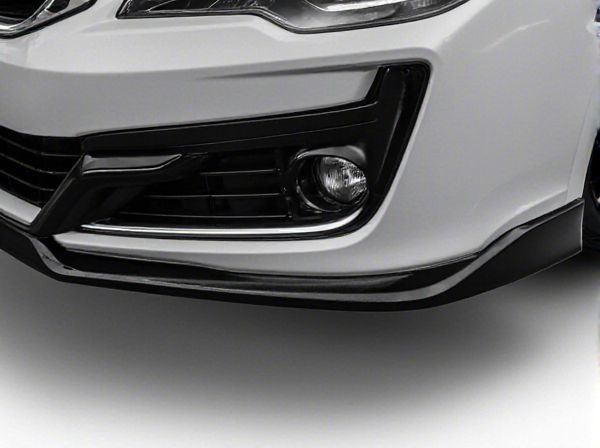
Photo illustration: Split Bumper vs Full Bumper
A split bumper offers enhanced airflow and a lightweight design, making it ideal for high-performance vehicles seeking improved cooling and agility. Full bumpers provide comprehensive protection and a more robust appearance, safeguarding your vehicle's front and rear from impacts. Choosing between a split bumper and a full bumper depends on whether you prioritize style, protection, or performance.
Table of Comparison
| Feature | Split Bumper | Full Bumper |
|---|---|---|
| Design | Separated upper and lower sections | Continuous single-piece structure |
| Protection | Partial coverage, focuses on specific impact zones | Complete frontal protection |
| Repair Cost | Lower, as damaged sections are smaller | Higher, requires full-piece replacement |
| Weight | Lighter due to segmented parts | Heavier from solid build |
| Installation | Easier, due to smaller components | More complex and time-consuming |
| Aesthetic | Sporty, aggressive look | Sleek, consistent style |
| Common Usage | Performance cars, aftermarket customization | Standard factory models, luxury vehicles |
Introduction to Split Bumper vs Full Bumper
Split bumpers and full bumpers serve distinct roles in automotive design and protection, with split bumpers typically covering only the front or rear sections, offering a streamlined look and easier replacement of damaged parts. Full bumpers encase the entire front or rear width of the vehicle, providing enhanced protection against impacts and contributing to overall structural integrity. Choosing between split and full bumpers depends on factors such as vehicle type, aesthetic preference, safety requirements, and maintenance considerations.
What is a Split Bumper?
A split bumper is a vehicle front-end component divided into separate sections, typically with a gap or grille between them, enhancing airflow and styling flexibility. Unlike a full bumper that spans the vehicle's width, split bumpers allow for customization in design and improved cooling efficiency. This design is often favored in performance and off-road vehicles for its functional and aesthetic advantages.
What is a Full Bumper?
A full bumper is a solid, continuous piece of metal or polymer that spans the entire width of a vehicle's front or rear, designed to absorb impact and protect underlying components. Unlike split bumpers, which are divided into sections, full bumpers provide uniform coverage and a cohesive look along the vehicle's body. They enhance safety by distributing collision forces evenly while offering a streamlined aesthetic preferred in many automotive designs.
Key Differences Between Split and Full Bumpers
Split bumpers feature separate upper and lower sections, offering easier repairs and customizable styling options, while full bumpers are a single integrated unit providing a more seamless appearance and enhanced structural integrity. Split bumpers allow targeted damage replacement, reducing repair costs, whereas full bumpers typically require complete replacement after damage, influencing maintenance expenses. The choice between split and full bumpers affects vehicle aesthetics, repair complexity, and cost-efficiency depending on design preferences and practical needs.
Aesthetic Appeal: Split vs Full Bumper
Split bumpers enhance a vehicle's aesthetic appeal by offering a sleek, segmented design that accentuates the car's contours and provides a modern, sporty look. Full bumpers present a continuous and robust appearance, creating a sense of durability while maintaining a smooth, unified surface that complements classic or minimalist automotive styles. Choosing between split and full bumpers depends on whether the desired aesthetic emphasizes contemporary segmentation or traditional seamlessness.
Performance and Functionality Comparison
Split bumpers offer improved airflow and weight reduction, enhancing overall vehicle performance by reducing drag and increasing cooling efficiency. Full bumpers provide superior impact protection and structural integrity, ensuring better safety and durability in collisions. Choosing between split and full bumpers depends on the desired balance between aerodynamic performance and robust functionality.
Historical Significance in Classic Cars
Split bumpers, featured prominently in classic cars from the 1950s and 1960s, symbolize the era's distinct design philosophy emphasizing style and flair, particularly on iconic models like the Chevrolet Bel Air and Cadillac Eldorado. Full bumpers became standard in later decades, reflecting advancements in automotive safety regulations and engineering, encapsulating the shift towards more robust protection without sacrificing aesthetic integrity. Collectors and enthusiasts value split bumpers for their vintage appeal and historical context, while full bumpers are appreciated for marking the evolutionary progress in vehicle safety and design.
Customization and Aftermarket Options
Split bumpers offer greater customization flexibility with modular designs allowing for interchangeable components, enabling easy upgrades or repairs tailored to specific vehicle aesthetics or performance needs. Full bumpers provide a solid, uniform structure that often requires specialized fabrication for customization, limiting aftermarket options but offering enhanced durability and integration with factory chassis. Aftermarket availability is broader for split bumpers, including adjustable mounts, skid plates, and winch-ready setups, catering to off-road enthusiasts seeking personalized vehicle protection and style.
Pros and Cons of Each Bumper Type
Split bumpers offer easier access to engine components and reduced repair costs due to their modular design, making them ideal for vehicles requiring frequent maintenance. Full bumpers provide superior structural integrity and enhanced protection during impacts, which benefits vehicles in high-risk environments or off-road conditions. However, split bumpers may compromise overall durability, and full bumpers can increase vehicle weight and complicate repairs after damage.
Which Bumper is Right for Your Car?
Split bumpers offer a customizable fit for vehicles with diverse front-end designs, providing better airflow and often easier repairs in case of damage. Full bumpers cover the entire front or rear width, delivering maximum protection against impacts and a unified aesthetic appearance, preferred for heavy-duty or classic cars. Choosing the right bumper depends on your car's design, intended use, and desired balance between protection, style, and maintenance convenience.
 caratoz.com
caratoz.com